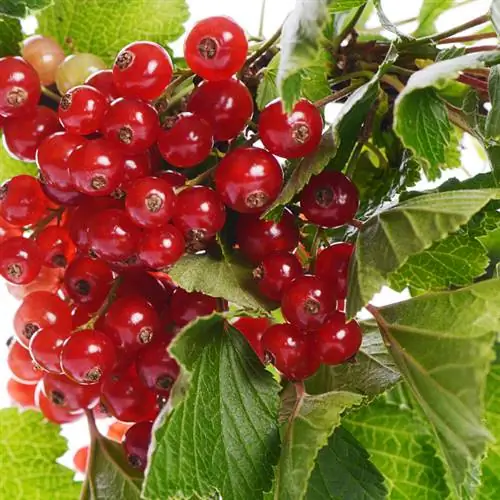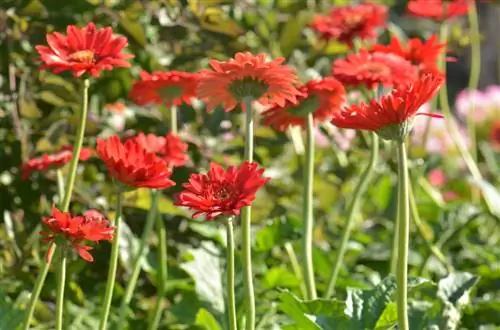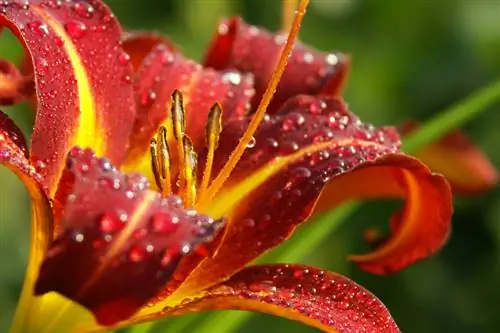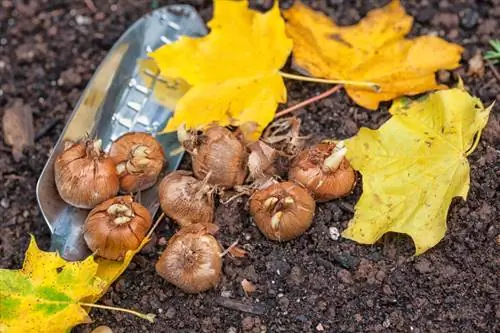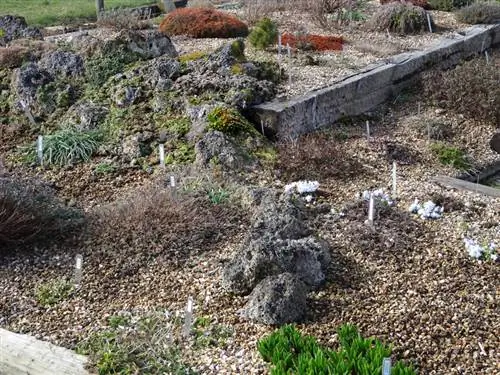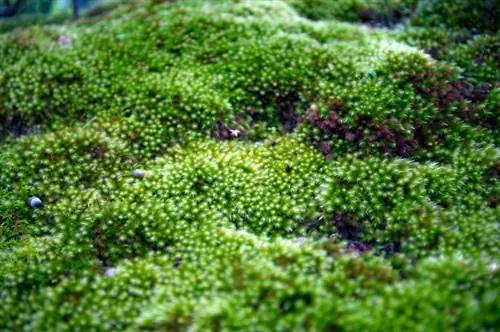- Author admin [email protected].
- Public 2023-12-16 16:46.
- Last modified 2025-01-23 11:20.
Red currants are one of the tastiest berries in the garden. The shrubs require little care and are undemanding. Nevertheless, in summer they produce many red berries, which taste best when eaten fresh.
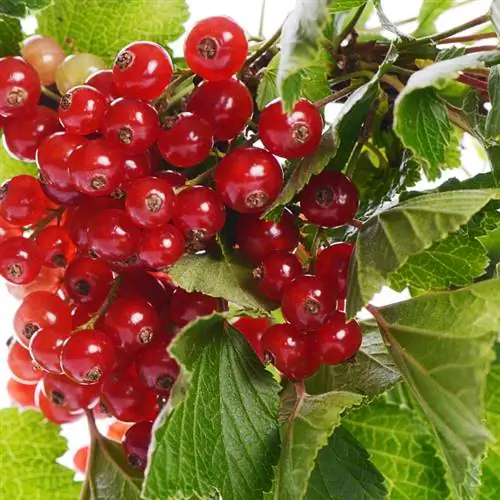
How to plant red currants correctly?
To plant red currants, choose a sunny, wind-protected location and loose, nutrient-rich soil. Plant the shrubs in fall or early spring, spacing plants 1.5 to 2 meters apart and providing adequate water and regular trimming.
Berries from the gooseberry family
The hobby gardener may hardly believe that red currants are part of the gooseberry family. In fact, small thorns are still present on wild plants. In the cultivated forms they are hardly noticeable.
The botanical name of the red currant is Ribes rubrum, with the suffix indicating the red color of the berries.
The white currant is a variety that emerged from the red currant. Blackcurrants, on the other hand, are an independent variety.
What you need to know about red currants
Red currant bushes can grow quite old, lasting more than 15 years. However, the cultivated forms hardly produce any berries as they get older.
With red currants, the largest and most beautiful fruits grow on the slightly older shoots. This distinguishes it from the black currant, which mainly grows on annual wood.
When to plant red currants?
As with all berry bushes, autumn is the best time to plant the bushes. The soil is then still moist and the roots do not dry out so quickly.
If the best time has been missed, you can still plant red currants in very early spring. Then you have to water more often.
Which location is suitable?
Red currants love a place in the sun. They also grow in partial shade, but the berries remain smaller and are not as sweet. The bushes don't like too much wind. Therefore, ensure a location protected from the wind.
What should the earth be like?
The soil should be nutrient-rich and loose. Improve soils that are too poor with mature compost. If the soil is heavy, there is a risk of waterlogging. In this case, mix the soil with sand so that the rainwater can drain away.
Since red currants are shallow-rooted, you should keep the soil under the bushes free of weeds. Otherwise the roots would be injured if the soil was worked.
How to plant red currants?
- Shrub base below the surface
- Prune the shrub beforehand
- Trimming roots
- Water well
- Apply mulch cover
The planting hole should be larger than the root ball. Place the plants deep enough in the soil so that the base of the bush is covered with soil.
What planting distance is ideal for red currants?
Do not plant red currants too densely. The bushes should be 1.5 to 2 meters apart. When creating several rows, leave at least two meters of space.
When are the red currants harvested?
You can harvest the first red currants at the end of June if the weather is good. The berries ripen unevenly, so you have to pick each bush several times. The harvest lasts until the end of July.
Birds like red currants just as much as people do. If you also want to harvest a few berries, put a net over the bushes by mid-June at the latest.
Can the bushes be moved?
If the red currants are in an unfavorable place, you can transplant them. However, remember that transplanted bushes will only bear fully again after three years.
Replanting older currant bushes is not worth it. It's better to buy new bushes right away or cut cuttings from the old plant.
Can red currants be propagated?
You can easily propagate red currants using cuttings or planters.
To propagate with cuttings, cut cuttings from annual canes in winter and stick them in potting soil.
To lower it, a young shoot is bent to the ground, anchored there and covered with earth. Several new plants form at the eyes underground, which are separated from the mother plant the following year.
Do red currants get along with other plants?
Basically, red currant plants prefer to stand alone. They need the nutrients in the soil for themselves. An exception is wormwood, in whose neighborhood the bushes thrive.
The currants will do better if you apply a mulch of bark mulch, grass clippings (without flowers!), leaves or other garden materials under the bushes.
This provides the soil with additional nutrients and prevents the soil from drying out. You also save yourself the hassle of pulling weeds.
How much care do red currants need?
Red currants don't need much care. However, they cannot tolerate drought or waterlogging. If the soil is very dry, you definitely need to water.
Regular cutting is necessary so that the bushes produce lots of berries.
Tips & Tricks
Red currants have been cultivated since the 15th century. Because of their high vitamin C content, they are real vitamin bombs. Eating fresh berries is also said to have a positive effect on blood pressure. Dried red currants can be brewed as tea and used to aid digestion.

